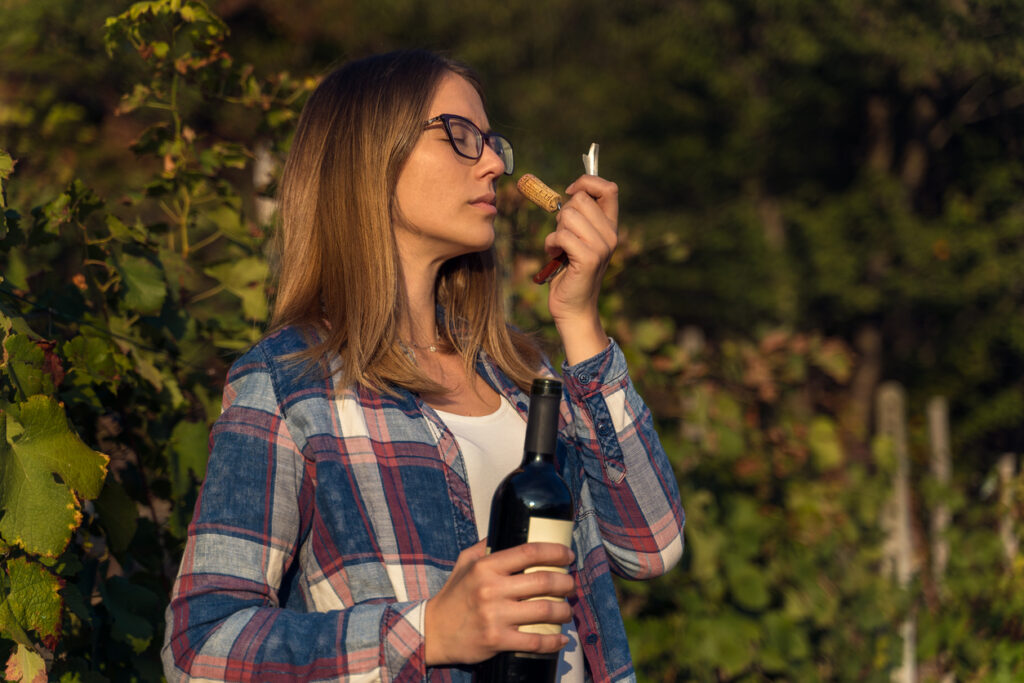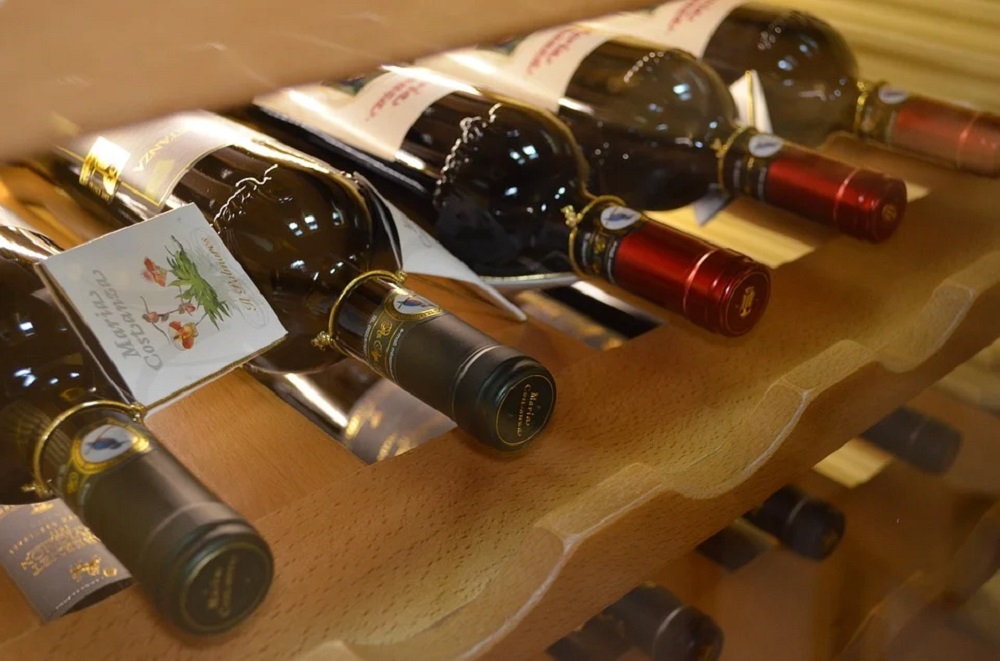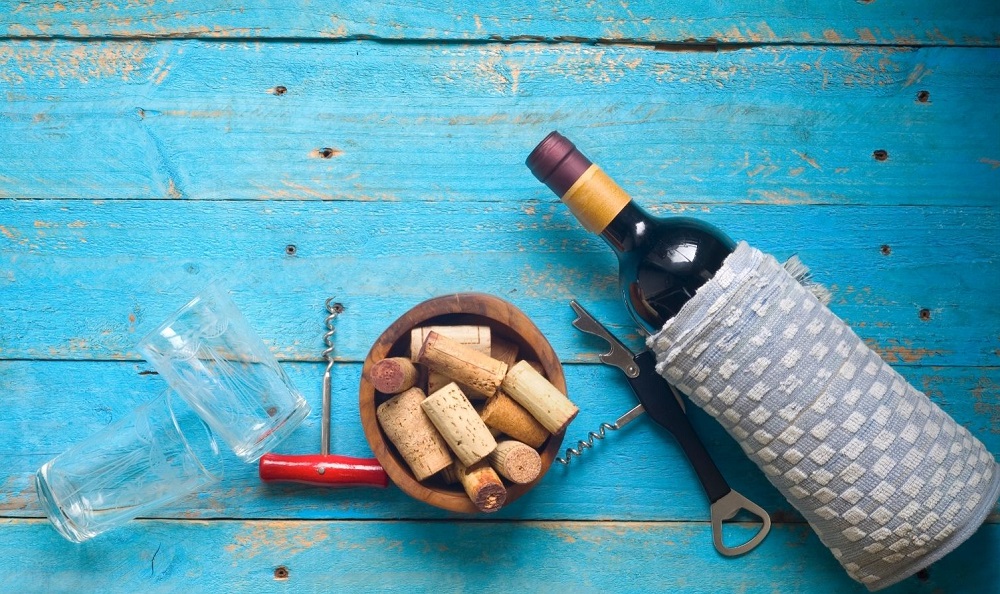Unopened wine can go bad, but it may be several years before it becomes a problem. However, wine that is improperly stored can go bad quicker. If unopened wine does go bad, it should be thrown away. Illness is unlikely, but the wine won’t taste pleasant.
If you’re worried your wine has gone off, there are a few things to check to be sure. Pour a small amount of wine into a glass, and look for these features:
Color of the Wine
- A change in color. If you haven’t drunk the wine before, you may be unsure what the correct coloring is. Bad wine will generally take on a browner shade. For reds, the vivid shades will be dulled to a plain brown.

White wines have a tendency to turn golden, and some turn opaque. If your wine looks brown, it has potentially gone bad. If small bubbles have appeared, this is a sign that the wine has gone through unplanned fermentation, and is no longer good to drink.
Smell of the Wine
- Bad smell. Wine that has gone bad in the bottle will likely have an unusual smell, similar to that of must and garlic. While opened wine goes bad with a sharper tang, this isn’t always true for unopened wine.

Really spoiled wine will have an immediately obvious smell, but those just turning may need time to aerate before you can be sure. At this point, the sulfides will have begun to evaporate, leaving behind the natural aroma of the wine.
Taste of the Wine
- The taste. If the state of the wine is unclear, there’s no harm in taking a small sip. You’re highly unlikely to get ill – although your taste buds won’t thank you for it. Bad wine will taste sharp and sour, altogether unpleasant. If it tastes like it’s gone bad, it probably has. Otherwise, it isn’t very nice wine anyway, and you should reach for a better bottle.
Before opening, there’s another sign that the wine is bad: the cork. If wine has leaked into the cork, or the cork is pushing past the rim, the wine has probably spoiled.
Bad wine doesn’t present much of a health risk, although bacteria growth is still possible. If your wine smells, tastes, and looks good, then it’s probably fine.

People have drunk wine that is over a hundred years old, and still enjoyed the flavoring (although these are generally very fine wines). Even the Speyer Bottle, wine that was buried by Romans in 325 CE, is still drinkable – it’s just probably not very nice.
The best way to be able to identify if a wine has gone bad is to drink wine – and pay attention when you do. Smell your wine before you drink it to know what it is the scent of wine that needs to be aerated, and what wine has gone off. Watch the wine as it pours, to see the color it takes, and understand when that has dulled.
How long can wine be kept for?
Wine has a long expiry date, and correctly stored wine can last for years unopened.
As a general guide:
- White wine: 1-2 years.
- Red wine: 2-3 years.
- Fine wine: 10-20 years.
Fortified wine: Almost indefinitely.
Once opened, the longevity of wine greatly shortens. Open wine should be sealed and stored upright in the fridge. Opened white wine has a lifespan of 3-5 days, and red wine will last 3-6 days.
Stored correctly, wines can have an even greater longevity. A red wine may be good for up to 10 years, and some fine wines have kept their rich flavoring for decades. Wine kept for too long is unlikely to develop harmful bacteria, but the taste starts to dull.
How to store wine properly
Storing wine properly is the best way to extend its shelf life. Unopened wine needs to be kept at an even temperature, on its side, with little light, and a consistent humidity.
The temperature is one of the most important factors when storing wine. Too cold, and the wine will freeze. Too warm, and it ages quickly.
Ideal temperatures are around 55 degrees Fahrenheit, although the optimal temperature depends on the wine itself. Perhaps more importantly, wine should be kept at a consistent temperature.

Unopened wine bottles should be kept on their side, as they’re stored in classic wine racks and cellars. This is important when storing cork topped wines, as it keeps the cork from drying out. It’s also perhaps the safest way to store them, and saves space.
Wine does better in the dark, as the sun can damage the subtle balance of flavorings in the wine. Keep wine out of direct sunlight.
Avoid vibrations, such as those from the dishwasher and washing machine. These can disturb the sediment, causing the wine to age. Once wine has been stored, try to disturb it as little as possible.
Humidity also plays a role, and the humidity levels should be kept around 60-70% if you want to store wine for a long time.
What is corked wine?
Corked wine isn’t just wine with bits of cork floating at the bottom. Corked wine has been spoiled by cork taint, a chemical component known as TCA. As cork is a natural material, it sometimes contains elements of fungus.
During the involved process of turning bark into a cork, TCA is formed from a mixture of fungus and chemicals. If the cork is infected with TCA, the wine becomes infected. For some wineries, TCA has caused an entire cellar of wine to be ruined.

Corked wine isn’t dangerous, but it does spoil an unopened bottle of wine. It can ruin both the smell and the taste, with some comparing it to wet dog.
For a particularly bad taint, or a sensitive wine drinker, corked wine can be evident as soon as the bottle is opened. On other occasions, it may not be clear until you’ve taken a sip. While the cork taint won’t make you sick, you’re unlikely to want to drink the rest of the wine.

